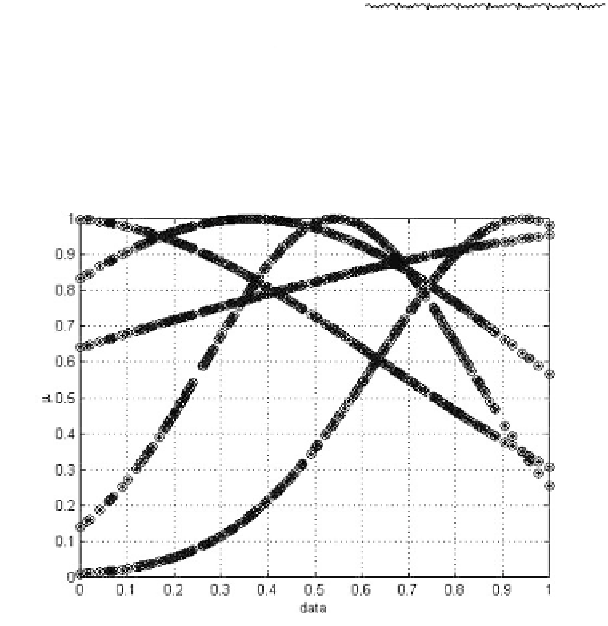Information Technology Reference
In-Depth Information
7.11(e). After merging of similar fuzzy sets, the number of fuzzy sets and rules are
reduced to two. Thereafter, the Takagi-Sugeno rule's consequents are recalculated.
Neur
o
-Fuzz
y
traini
n
g perf
o
rman
ce
0.8
40
0.6
30
0.4
20
0.2
10
0
0
-0.2
10
20
30
40
50
60
70
80
90
100
220
240
260
280
300
320
340
360
380
400
No of Epochs
tim e
Neuro-f
u
zzy ou
t
put-V
s
-Actua
l
0.2
1
0.1
0
0.5
-0.1
0
-0.2
20
40
60
80
100
120
140
160
180
200
220
240
260
280
300
320
340
360
380
400
Time
tim e
Figure 7.11(a).
Neuro-fuzzy network training
Figure 7.11(b).
Neuro-fuzzy prediction
Figure 7.11(c).
Fuzzy membership functions for input domain (
u
) partition after neuro-
fuzzy training.
This resulted in the final fuzzy model, which is very much transparent to
interpretation. However, the accuracy of the model is greatly hampered as the MSE
values achieved with training and validation data sets are now respectively
0.0093
and
0.0147
. Therefore, to improve the model accuracy while retaining its
transparency the fuzzy sets have to be further tuned using genetic-algorithm-based
constrained optimization, as described by Setnes and Roubos (2000), Roubos and
Setnes (2001) and Panchariya
et al.
(2004b). By this way one can generate a






































































































































































































































































Search WWH ::

Custom Search